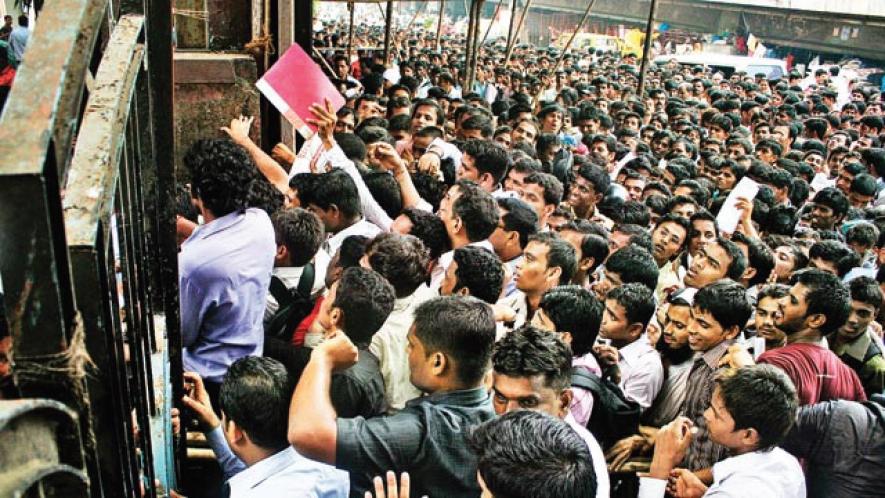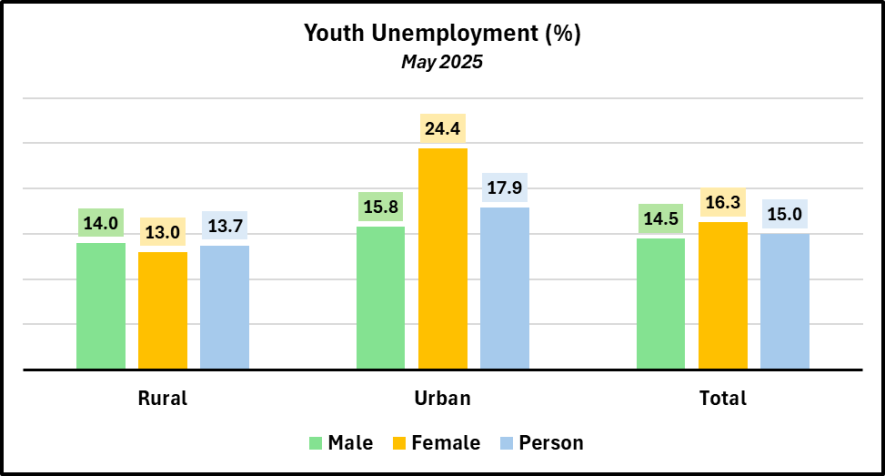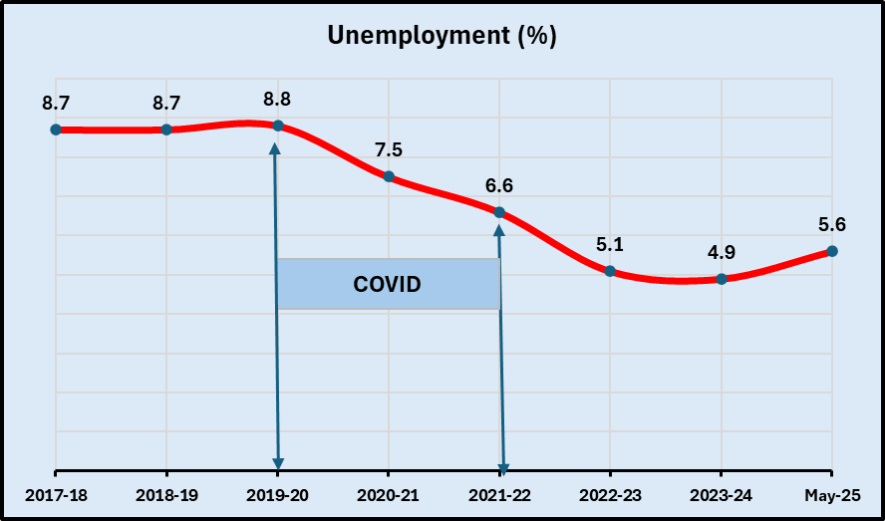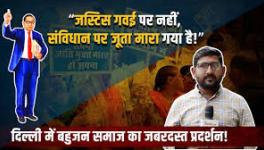Working 1 Hour Per Week? You Are Employed!

Last week, the government released a monthly report on employment in the country. It reveals a harrowing picture of joblessness among youth: 15% of people in the 15-29 years age group were unemployed. The overall unemployment rate for all age groups was reported at 5.6%, which is not a very happy level itself.
The report is the second in a new series of monthly reports on employment started by the Ministry of Statistics and Programme Implementation. It is called the Periodic Labour Force Survey (PLFS). Earlier, these reports used to be published annually, as also quarterly for urban areas. The monthly report is based on a survey of about 3.9 lakh persons covering all parts of the country.
As the chart below shows, the situation of youth unemployment is even more dire in urban areas, where average unemployment is nearly 18 percent. Among women, joblessness touched a staggering 24.4% in urban areas while among men it stood at nearly 16%.

The situation is marginally better in rural areas where average unemployment rate among youth was nearly 14%.
One Hour Work per Week
The report has published data on employed and unemployed on the basis of what is called ‘Current Weekly Status’ (CWS). According to the long-used definition of CWS, any person who reported to have worked for at least one hour in the week preceding the survey was categorised as ‘employed’. If a person reported looking or seeking work for at least one hour in the past week, he/she would be ‘unemployed’ provided he/she didn’t work in the rest of the time.
This contrasts with the other more realistic definition of employment/unemployment known as ‘usual status’. In this, a person is considered employed if he/she works for the majority of the time in the past 365 days. If the person works on more than two jobs then the job on which more time is spent is called ‘principle’ work while the other job(s) that take lesser time are dubbed ‘subsidiary’ work. ‘Usual status’ adds up both.
Clearly, the government’s desire to have monthly reports of its own has led it to adopt the CWS framework rather than the usual status one. But, for these monthly reports to become meaningful, the bizarre definition of employment as ‘one hour work per week’ needs to be reconsidered.
The fact that 15% youth are unemployed even with such a broad and loose definition of employment shows that the situation of joblessness is much more worrying than depicted by this data.
Underestimating Joblessness
The chart below shows unemployment rates over the years, drawn from various PLFS Annual Reports and summarised in the Annual Report 2023-24, with the last one being taken from the May 2025 Monthly report. This is based on CWS. Limitations of the data being collected are starkly evident – the Covid years show much lower rates of unemployment than expected, and reported by other surveys like the one done by CMIE, quoted by World Bank.

Note that the PLFS surveys cover the periods from July to June of next year. That is why 2019-20 is marked as the beginning of Covid period. 2019-20 indicates July 2019 to June 2020 and Covid hit India in its first wave in March 2020, leading to the first lockdown from end March to end May.
The Covid years showed huge spikes in unemployment in some periods (like April 2020 when it hit nearly 25%) followed by some semblance of ‘normalcy’ which meant an average rate of 7-8% . Despite this, the extent of unemployment is underestimated by these government surveys.
Notwithstanding this caveat, the chart above shows that average unemployment rate has remained unconscionably high over the years. The monthly data for May 2025 is not strictly comparable to the annual average for other years but it does indicate an upward tendency. This is partly due to the onset of the lean season of summer after rabi harvesting, and partly too the severe limitation of the methodology adopted, that is, the CWS limitations.
Under-employment or hidden unemployment also escapes the notice of such surveys. Not only does the methodology misidentify one-hour work per week as employment, but it also has no means of identifying the pitiable conditions and meagre wages, or illegal working hours that are widely prevalent especially in the informal sector which dominates the Indian economy. Earlier PLFS Annual Reports have recorded the very low wages received by large sections of working people. The pursuit of high-frequency headline numbers like ‘employment’ or ‘unemployment’ dramatically misses the mark in a variegated and complex economy, with distressed people forced to work many different types of jobs through the year just to make ends meet.
Get the latest reports & analysis with people's perspective on Protests, movements & deep analytical videos, discussions of the current affairs in your Telegram app. Subscribe to NewsClick's Telegram channel & get Real-Time updates on stories, as they get published on our website.
























